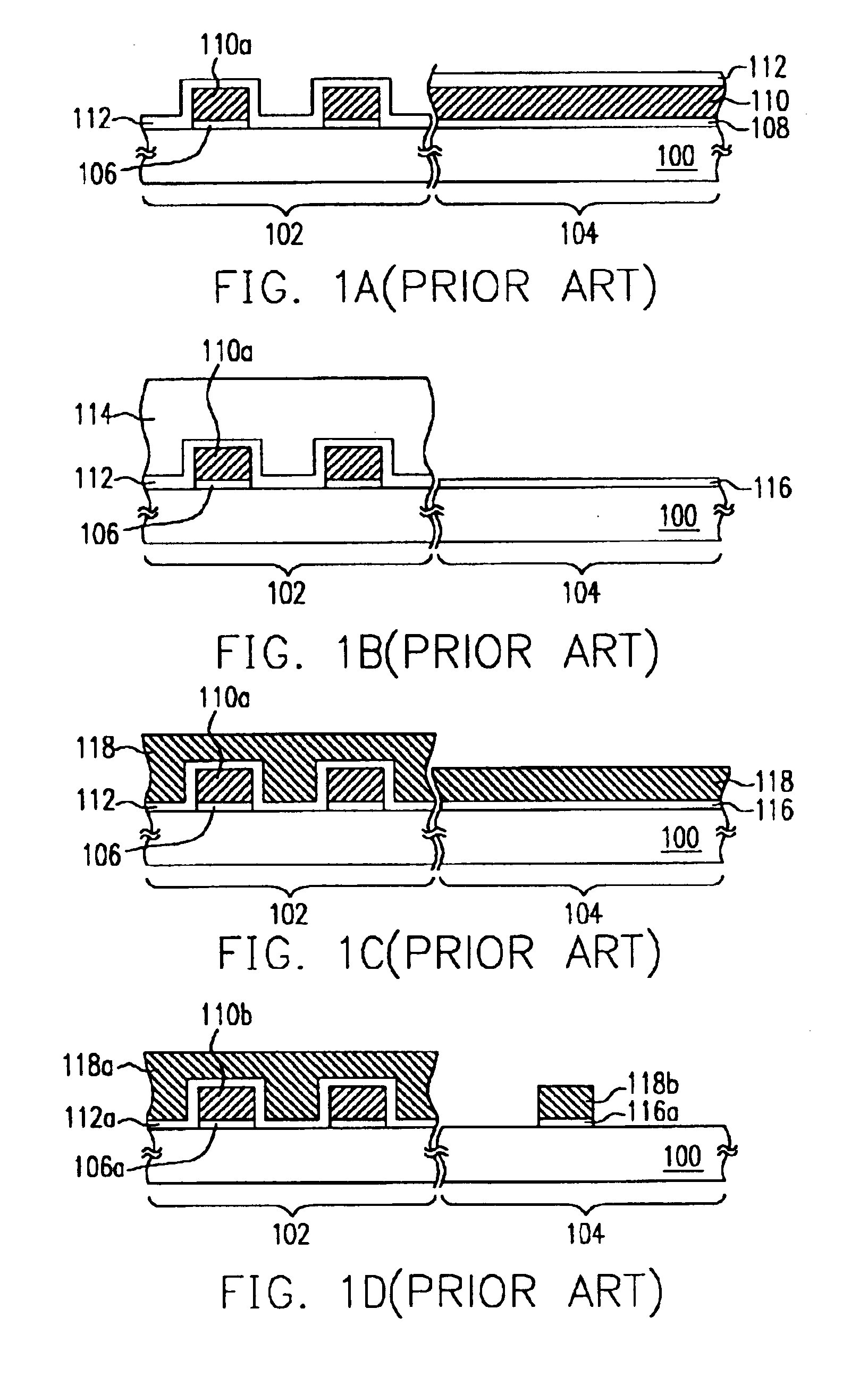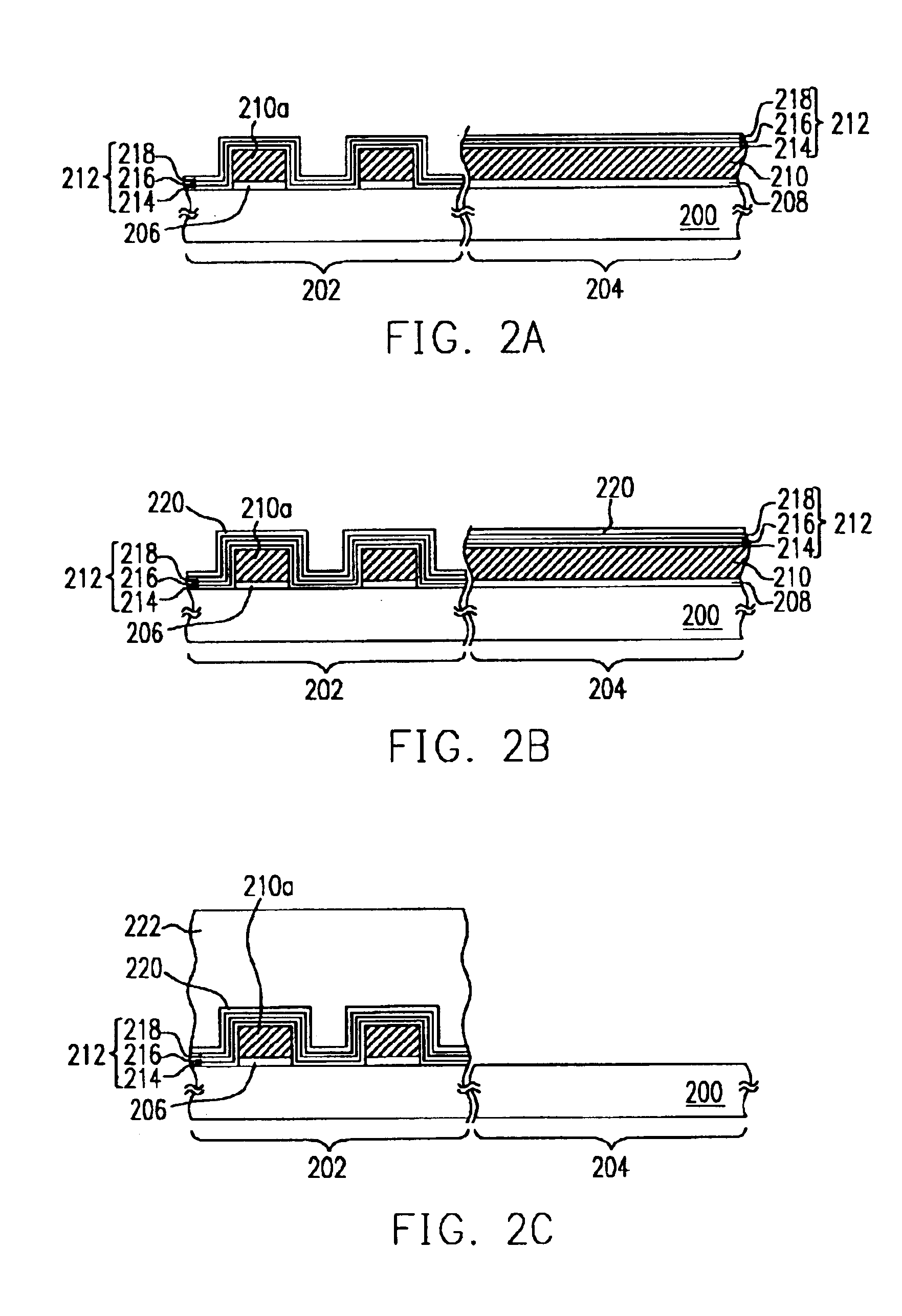Method of manufacturing flash memory
- Summary
- Abstract
- Description
- Claims
- Application Information
AI Technical Summary
Benefits of technology
Problems solved by technology
Method used
Image
Examples
Embodiment Construction
[0022]Reference will now be made in detail to the present preferred embodiments of the invention, examples of which are illustrated in the accompanying drawings. Wherever possible, the same reference numbers are used in the drawings and the description to refer to the same or like parts.
[0023]FIGS. 2A to 2F are schematic cross-sectional views showing the progression of steps for fabricating a flash memory device according to one preferred embodiment of this invention. The substrate 200 in FIGS. 2A to 2F is partitioned into two regions, a memory cell region 202 and a peripheral circuit region 204.
[0024]First, as shown in FIG. 2A, a tunnel dielectric layer 206 is formed over the memory cell region 202 and a liner layer 208 is formed over the peripheral circuit region 204. The tunnel dielectric layer and the liner layer are oxide layers formed, for example, by performing a thermal oxidation process. Thereafter, a conductive layer 210 is formed over the entire substrate 200. The conduct...
PUM
 Login to View More
Login to View More Abstract
Description
Claims
Application Information
 Login to View More
Login to View More - R&D
- Intellectual Property
- Life Sciences
- Materials
- Tech Scout
- Unparalleled Data Quality
- Higher Quality Content
- 60% Fewer Hallucinations
Browse by: Latest US Patents, China's latest patents, Technical Efficacy Thesaurus, Application Domain, Technology Topic, Popular Technical Reports.
© 2025 PatSnap. All rights reserved.Legal|Privacy policy|Modern Slavery Act Transparency Statement|Sitemap|About US| Contact US: help@patsnap.com



